Working as a blog author for FixThePhoto, I think I’ve become quite the PDF expert. Every day, my inbox is flooded with PDFs containing contracts, software reviews, style guides, and research articles. It's safe to say that PDFs are the backbone of my document processing.
I was stoked when Adobe announced the Acrobat AI Assistant, promising to include AI tools for PDF handling. They claimed it would be possible to make instant summaries or ask questions directly, and more. With recent updates, it now supports more languages, handles longer documents, and works even better with tables.
Besides, if you're part of the Adobe family, like me, you can take advantage of the integration with Photoshop and Lightroom. Plus, the company offers online tools, a mobile app, and Adobe Scan, so you can work on your PDFs anytime and anywhere.
However, my co-worker Mark, who also works with PDF regularly, was a true fan of PDF AI. He said the program had a user-friendly interface and helpful AI features. Besides, he said that PDF AI could pull out essential information from documents in seconds. We could find a common ground and decided to compare Adobe AI Assistant Acrobat vs PDF AI.
I do my best to provide readers with up-to-date and meticulously checked information. This time, I wanted to put both tools to the test and spent 2 weeks comparing their capabilities and defining strong and weak points.
|
Feature |

Adobe Acrobat AI Assistant |

PDF AI |
|
Key features |
|
|
|
Best for |
Professionals, businesses, legal professionals, Adobe users
|
Students, researchers, people seeking quick insights, multilingual users
|
|
Pricing |
From $4.99/month |
Free plan, from $10/mo
|
|
Pros |
✔️ Seamless Adobe integration
✔️ Robust features ✔️ Contract AI ✔️ Mobile access ✔️ Industry standard |
✔️ Intuitive chat
✔️ Fast summarization ✔️ Multilingual ✔️ User-friendly |
|
Cons |
❌ No free plan
|
❌ Less advanced
❌ Free tier limits |
|
File size limit |
100MB |
50MB
|
|
Page limit |
600 pages |
400 pages
|
|
Language support |
English, German, French, Italian, Spanish, Portuguese |
50+ languages
|
|
OCR |
✔️
|
✔️
|
|
Free trial/plan |
5 lifetime free requests |
Limited
|
|
Platform |
Desktop, Web, Mobile |
Web, Chrome Extension
|
Bloggers at FixThePhoto, including me believe that the most important aspect is whether these tools can improve our workflow. It's not enough to just have flashy AI features. We want to see if they genuinely make PDF handling easier. So, we paid attention to core functionalities and compared Adobe Acrobat AI Assistant vs PDF AI in terms of their ability to speed up regular tasks.
Neither Adobe Acrobat AI Assistant nor PDF AI are initially fillable PDF creators.
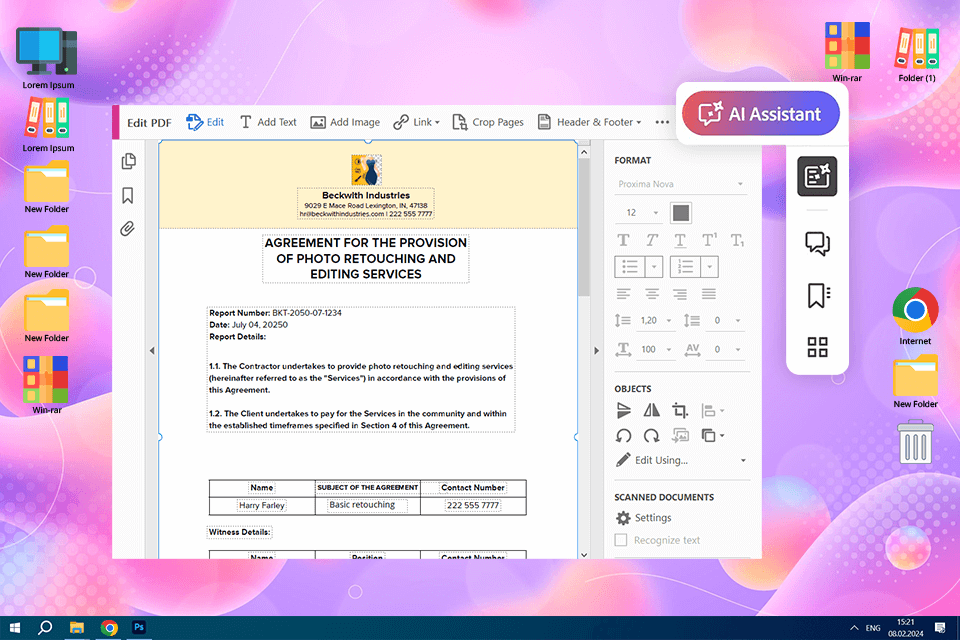
However, Acrobat attracts users with its powerful “Prepare Form” feature. It can automatically identify form fields and lets you customize them if you want. Besides, creating fillable PDFs with Acrobat is easy. I've used it for years to generate static contracts or client surveys and never experienced problems.
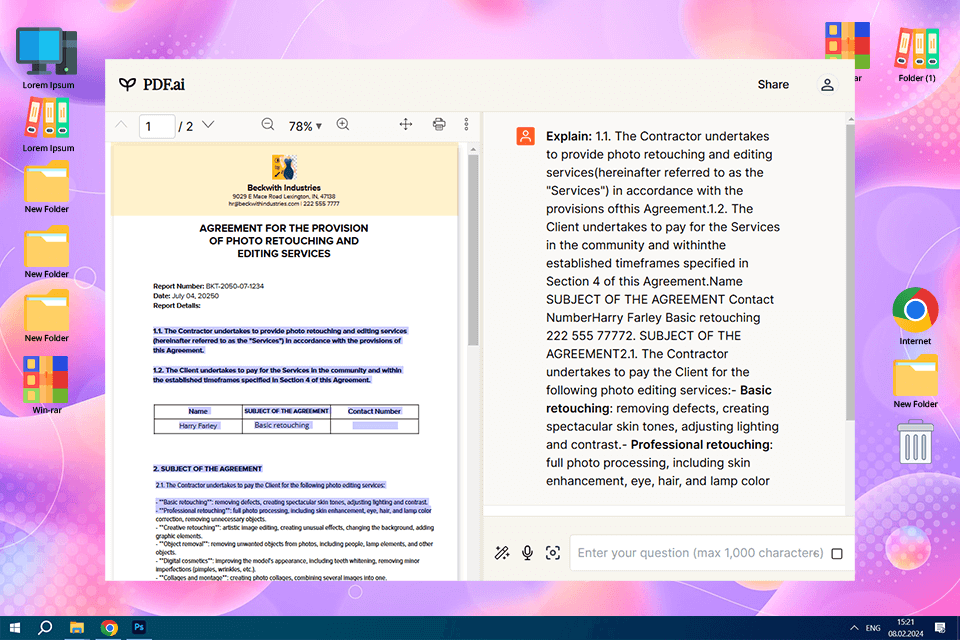
PDF AI is capable of many things, but building fillable PDFs isn't one of them. Sure, you can use it to pull information from a pre-existing fillable form, but it won't help you make a new one.
I’ve noticed that many programs are upgraded with AI to generate fillable PDFs, but Adobe Acrobat remains the industry standard for this task.
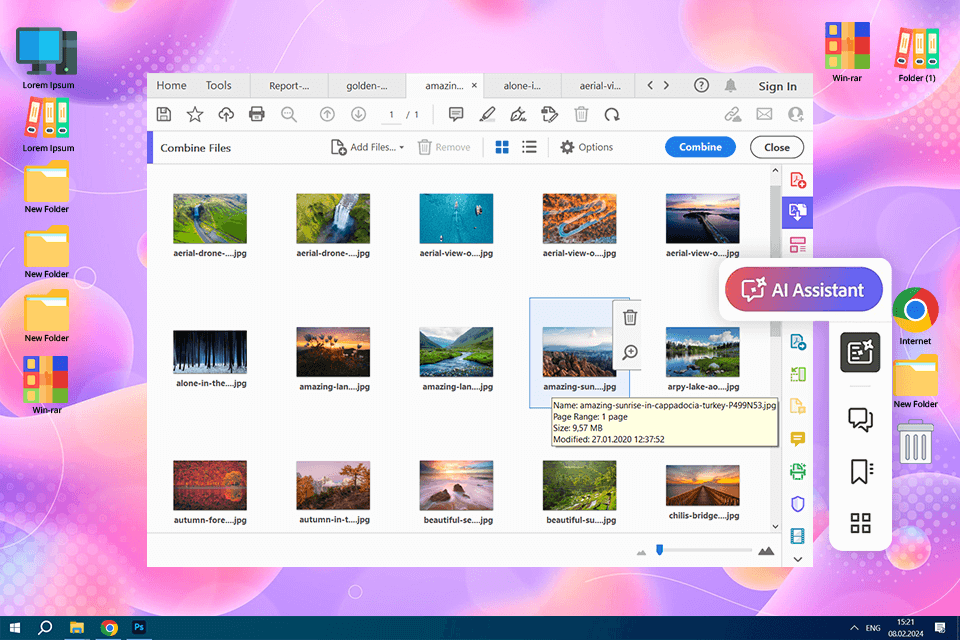
To my mind, Adobe AI Assistant Acrobat is a terrific tool for managing large files, especially when creating visual content like we do at FixThePhoto. This AI tool for PDF can handle large files, even those containing up to 600 pages. Most of all I appreciate stability and fast responses even when working with very big documents.
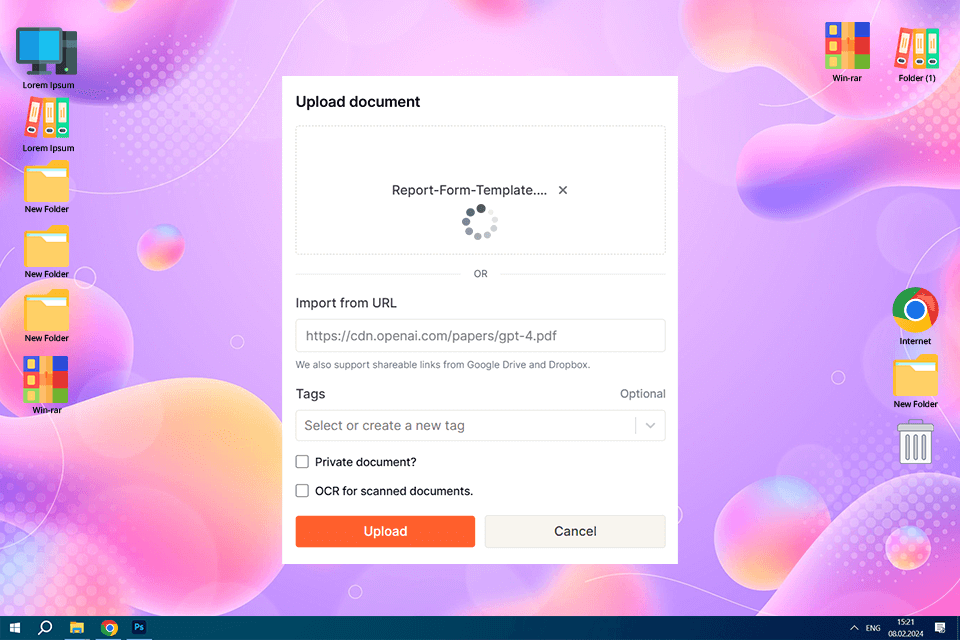
If you opt for PDF AI, especially free or lower-tier plans, you have to put up with a 35-50 MB file size limit. This can be a bottleneck for complex PDFs or long documents. Of course, you can process multiple smaller files, but it's not as efficient as handling one large file. If you often deal with multi-page files, this issue can drive you crazy.
Therefore, if you need a tool that can handle large files, Acrobat is the way to go.
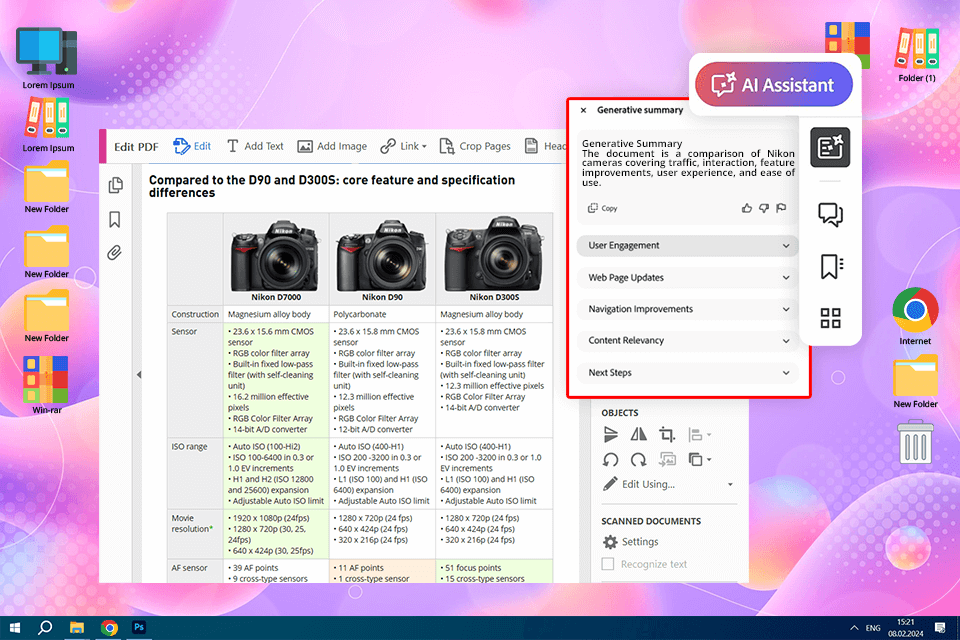
Adobe Acrobat, namely, its AI Assistant makes it easy to grasp the main points of a lengthy document. There is the “Generative Summary” feature that automatically creates a detailed outline, dividing the document into manageable sections. So, you can quickly identify key topics and focus on what matters most.
If you want to learn more details about a particular part of your summary, simply click “Ask AI Assistant” and it will offer tailored questions or allow you to ask your own to get more specific information.
One of the best things about AI Assistant Adobe Acrobat is that it provides citations for the information in the summaries. By clicking the citation link, you’ll get to the exact page in the original document and can quickly verify the facts. The accuracy of data is crucial for us because with pride ourselves on running a credible blog.
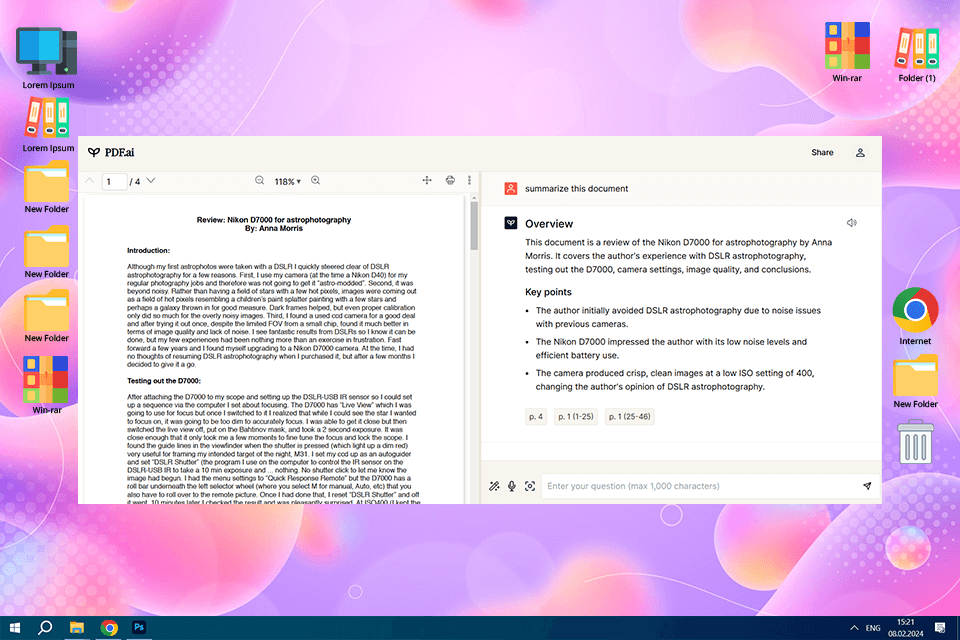
PDF AI also lets you quickly understand a long PDF. It brags about a chat-based summarization feature. You need to upload your document and ask the program to summarize the key points. It can quickly scan a document and give you the highlights. Plus, it's great at providing references, so you can easily verify the information.
Generally, when it comes to summarizing PDFs, I prefer Acrobat. It generates structured summaries with a more detailed and organized breakdown. Such a section-by-section format appeals to many users. What’s more, this PDF organizer integrates with other programs from the Adobe suite. Still, PDF AI is a great option for those who need a quick, overall summary of a document.
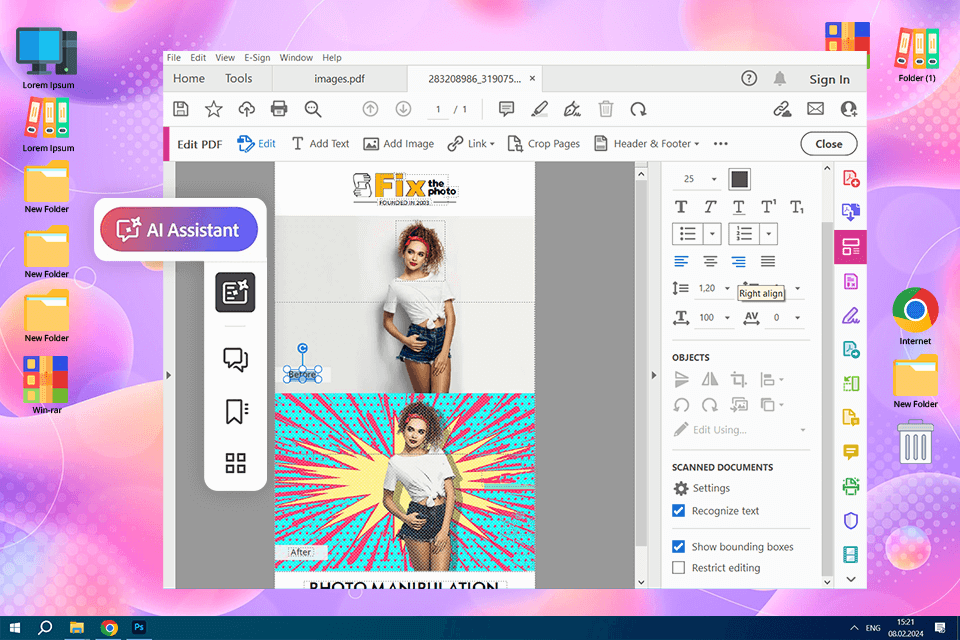
Acrobat offers a comprehensive suite of tools for working with PDFs. For instance, you can edit text, images, and page layouts. The AI Assistant in this free PDF editor makes the process even more intuitive. It provides helpful suggestions based on your content. Surely, Acrobat can’t fully replace human judgments, but it provides the precision tools you need to create professional-looking PDFs.
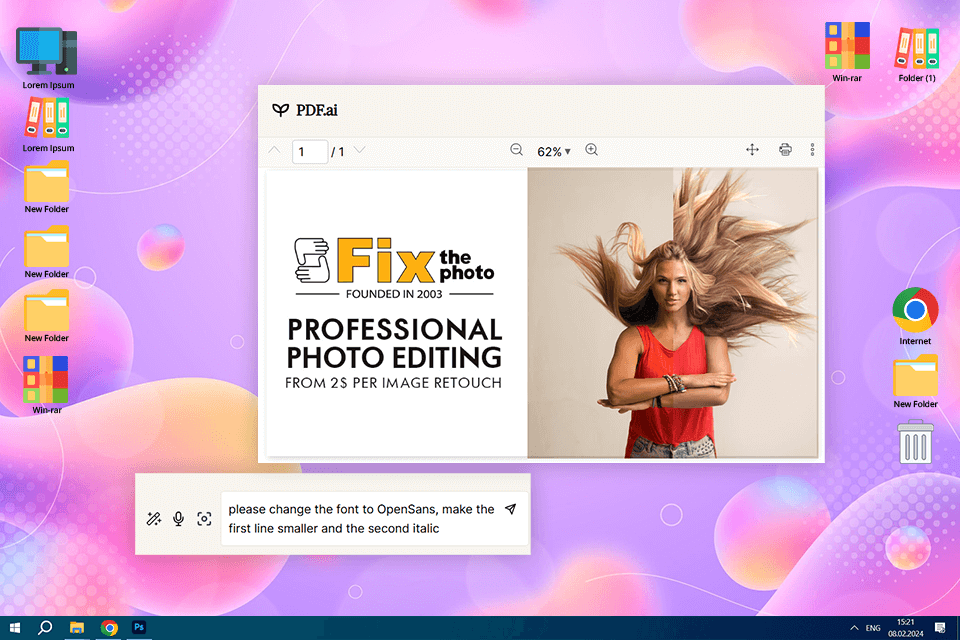
PDF AI is more of a language assistant than a traditional PDF editor. It doesn't let you drag and drop elements or tweak fonts. Instead, you can interact with it using basic commands. For example, you can ask it to “summarize this page” or “find all the dates mentioned”. Generally, it's great for getting information out of your PDFs, but it won't let you visually change the document.
Adobe Acrobat is the clear winner when it comes to detailed PDF editing. Here, you can change text, images, layouts, and more.
Usually, creators don’t need text-to-speech conversion or PDF narration on a day-to-day basis. Still, it is always great to have them at hand when suddenly required.
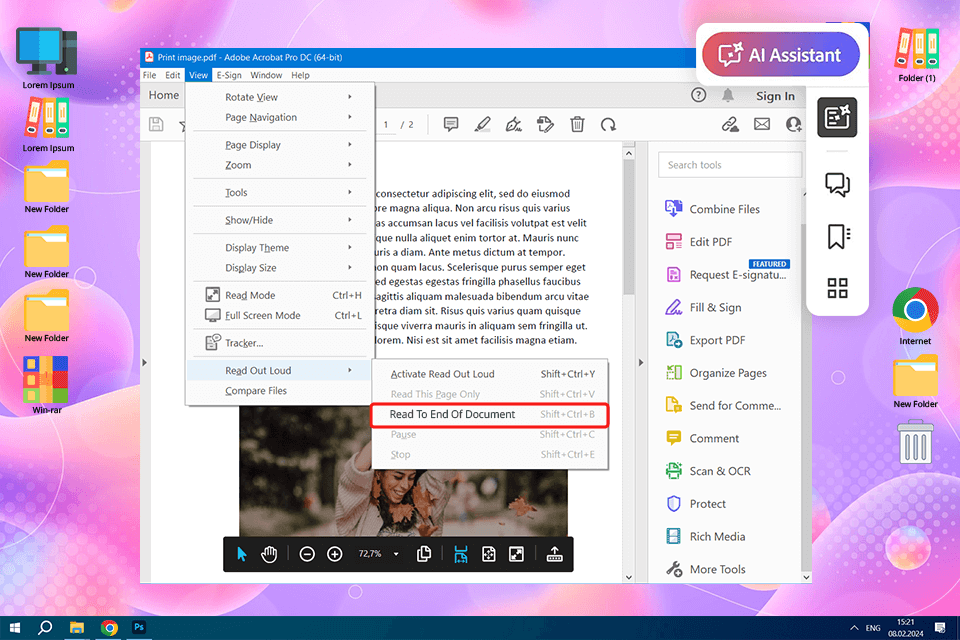
Adobe Acrobat, even its earlier version, has a built-in feature that allows you to listen to your PDFs. In fact, you can even customize the voice, speed, and volume. Although AI Assistant isn’t directly linked to this feature, Acrobat's text-to-speech capabilities are very helpful. The program can handle complex document formatting and offers a solid, though basic, read-aloud experience.
PDF AI lacks a dedicated text-to-speech function. Still, you can use specialized AI tools like Speechify to read PDFs aloud.
Despite all the advanced features available in Adobe Acrobat AI Assistant and PDF AI, users still want them to be good old-fashioned free PDF readers. It is really cool to have AI functions but only if they accompany a straightforward PDF viewing process.
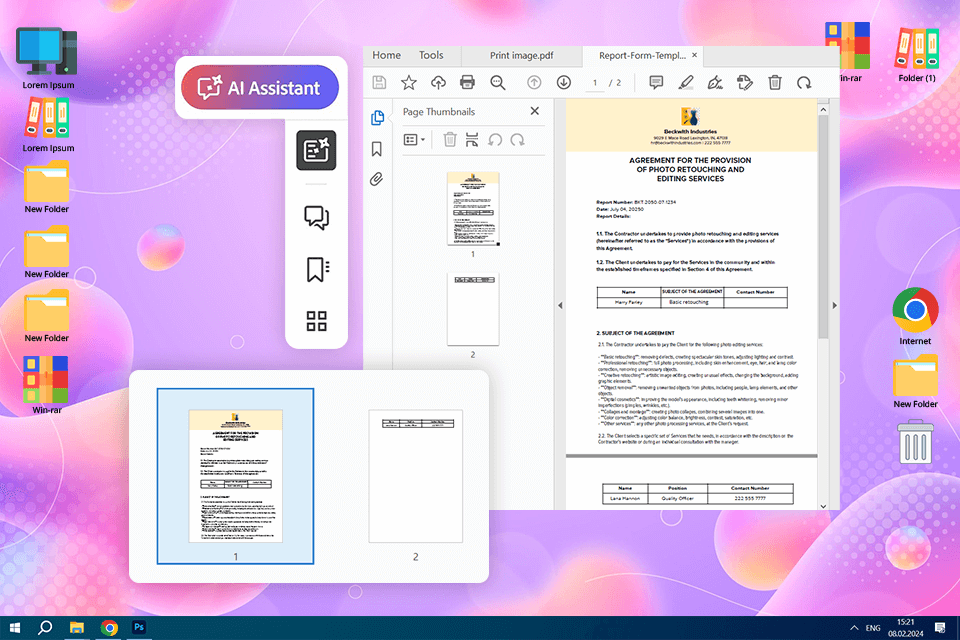
Adobe Acrobat Reader offers a convenient way to view PDF files. Known for its speed, reliability, and versatility, Acrobat Reader handles even the most complex PDFs with ease. You can enjoy smooth navigation, get crisp visuals, and choose from a wide range of viewing options. The AI Assistant makes the process even more convenient, allowing you to interact with your documents in real-time. For instance, you can get explanations, summaries, or translations in a matter of seconds.
PDF AI is like a question-answering tool for your PDFs. Instead of reading through the entire document, you can chat with the AI to get specific information. This is efficient, but the AI PDF reader is not as meticulous as Adobe Acrobat.
User experience and intuitiveness of the interface are also very important, especially if you spend most of your working time handling PDFs.
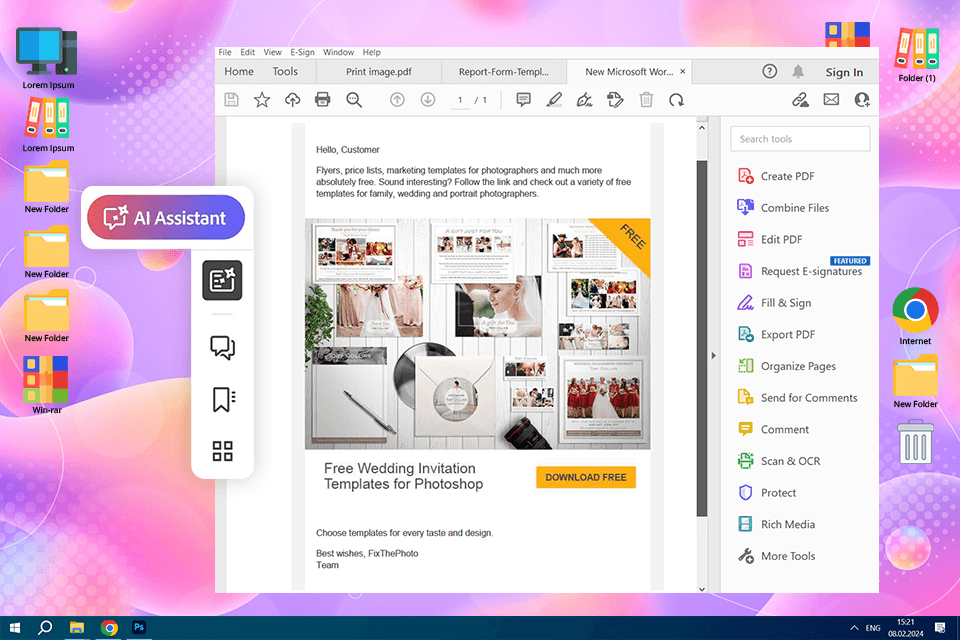
Adobe Acrobat AI Assistant is accurately integrated into Acrobat's recognizable interface. It is displayed as a sidebar, and looks and works professionally. Whether you're a seasoned Acrobat user or just starting out, you'll easily master it.
The AI Assistant panel is context-aware. It adapts to your needs, offering smart suggestions like "Summarize" or "Ask a question" based on the document you're viewing. Therefore, you don’t need to use separate AI art prompt generators. The interface is neat and correlates with Adobe's overall design. Generally, the AI Assistant is great for users who want a complete PDF solution for working with PDFs.
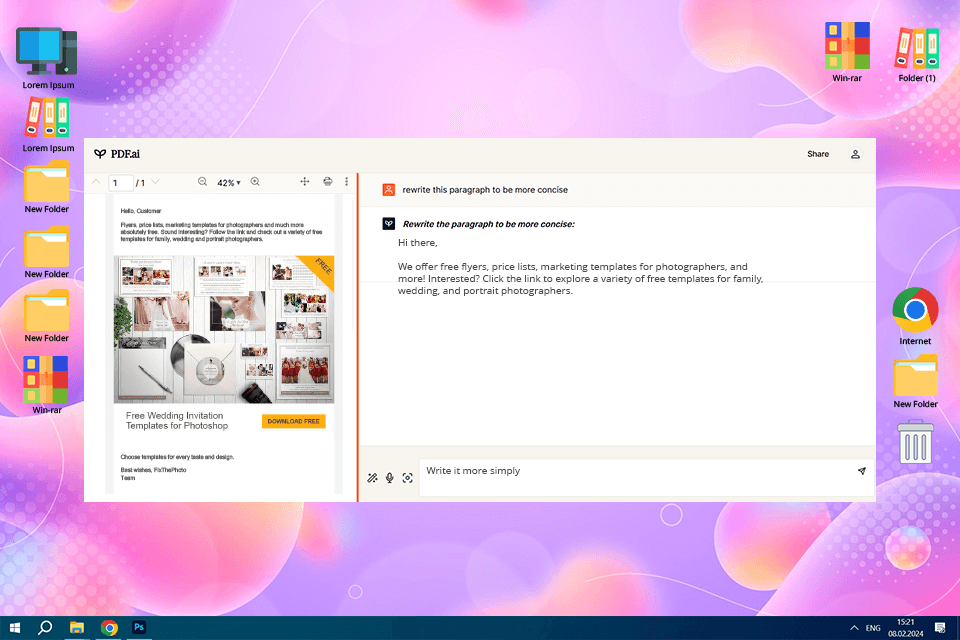
PDF AI has a unique, chat-based interface. The main part of the screen is occupied by an AI tool to chat with PDF.
The document and the chat window are side by side. Still, the main idea here is to make interacting with your PDF feel like a conversation.
The chat-based interface makes PDF AI incredibly user-friendly, especially for people, who have already used AI chatbots. You need to upload your PDF and start a conversation. The UI is clean and modern. It feels that developers wanted to make it simply for novices. By clicking the "PDF AI button", you’ll get to the main chat input area.
It is difficult to define which program is better in terms of UI. PDF AI is simpler but Acrobat is more coherent and feature-packed.
Considering how active our lives online are, it is paramount to safeguard our data. This is especially true for sensitive information, such as contracts, financial records, and customer data.
Adobe has always prioritized data security, and Acrobat AI Assistant is no exception. Thanks to the strong Adobe Acrobat AI Assistant privacy policy, you can be confident that your data is handled responsibly. As a trusted name in the industry, this PDF editor for Mac and Windows offers enterprise-level security features to protect your sensitive information. Besides, the company maintains detailed and transparent data privacy practices, which you can read on the official website.
PDF AI also follows the latest security standards to keep your documents protected from third parties. Still, it is always smart to take a closer look at their privacy policy to see exactly how they protect your information, particularly if you're uploading important or private documents.
Both tools offer top-notch security mechanisms. Still, some users feel more protected with Adobe thanks to its longer history and a more established reputation.
In addition to basics, these 2 programs have interesting extras.
Adobe Acrobat AI Assistant boasts integration with the Acrobat ecosystem, offering features like:
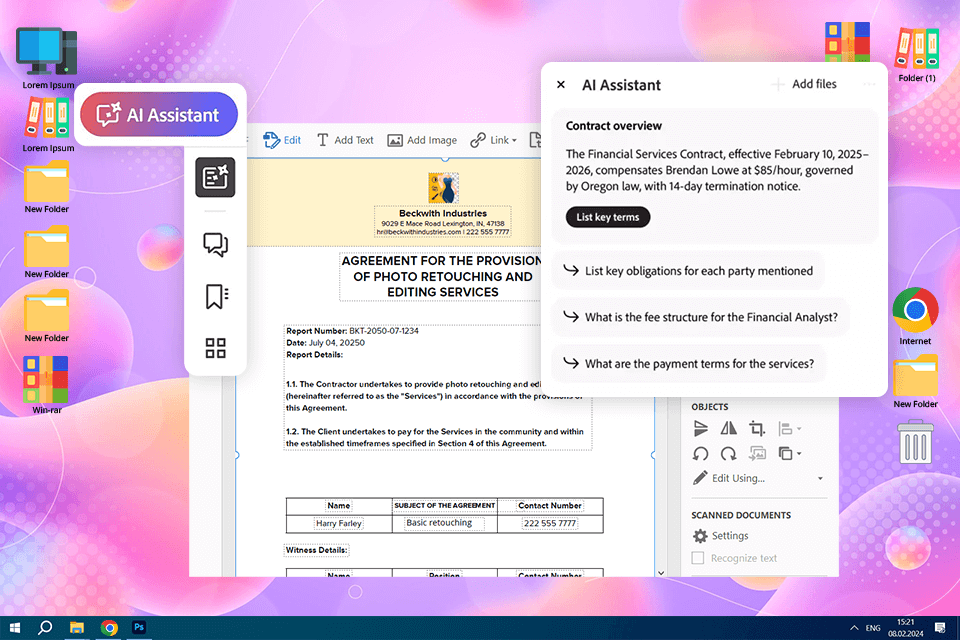
AI Contract Analysis. The program can automatically extract key points from contracts such as payment terms, termination clauses, and more. Plus, it can identify potential risks and compare agreements to industry best practices. This means you can spend less time poring over contracts and more time focusing on strategic business decisions.
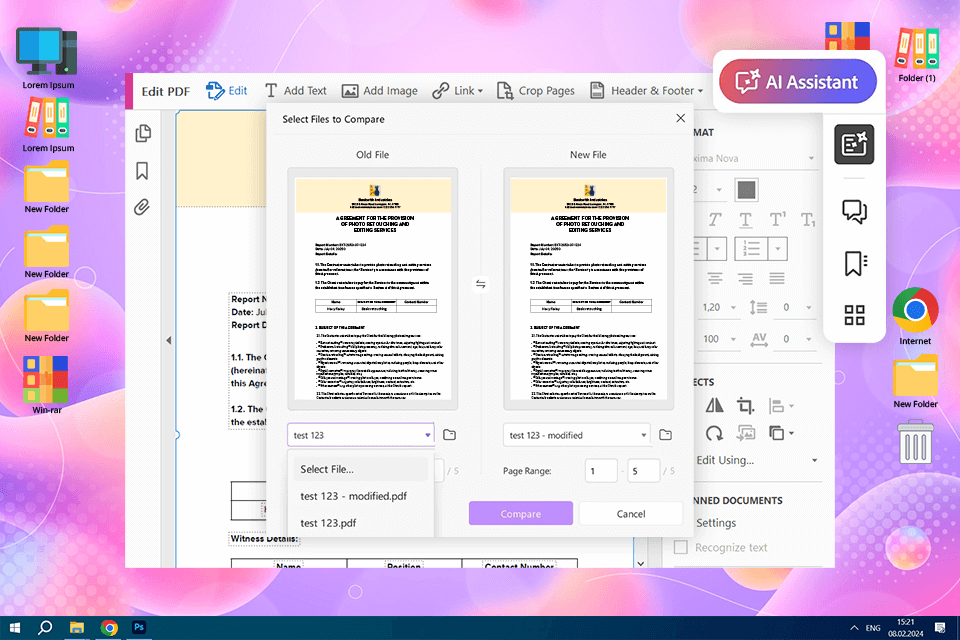
PDF AI is best known for its advanced features, AI-powered interaction, and multilingual support:
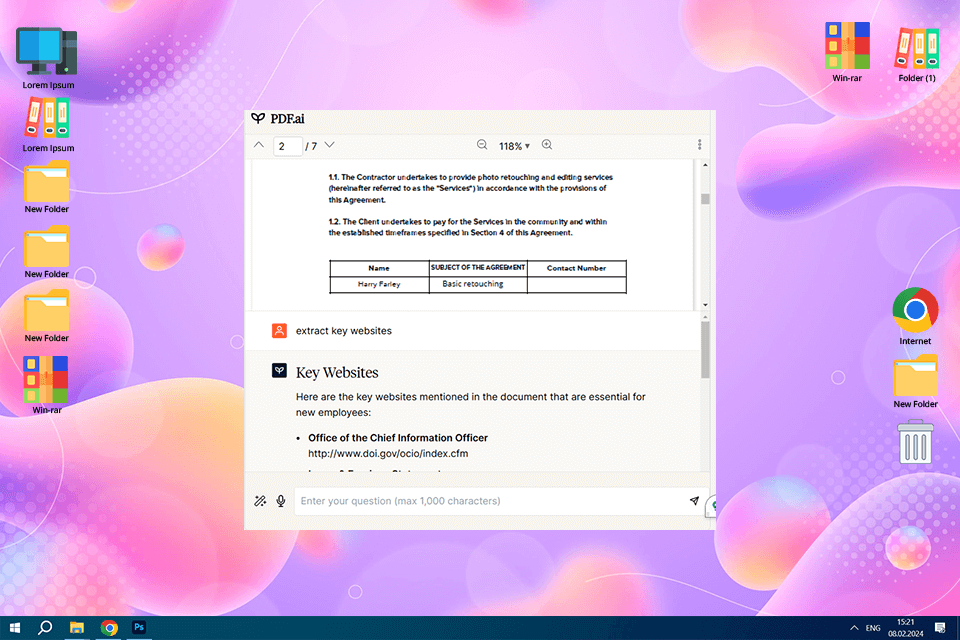
Data extraction. With PDF AI, you can easily extract tables, lists, and text from your PDF files and convert them into CSV or JSON formats. This means you can analyze sales data, research findings, or any other information stored in PDFs without manual data entry.
Choose Adobe Acrobat AI Assistant if:
✔️ You are an active Adobe user: If you're already using Adobe apps or Creative Cloud free trial, you can get the most out of Acrobat AI Assistant.
✔️ You need professional PDF editing features: If you want to edit PDF files like a pro and use the latest AI features, Acrobat is a great option.
✔️ Contract analysis is important to you: Legal professionals, contract managers, or anyone dealing with contracts regularly will appreciate Acrobat's contract-specific AI features.
✔️ You frequently work with large, complex documents: If you have to deal with large, visual-packed, or technically dense PDFs, you will love AI Assistant for Adobe Acrobat.
✔️ Enterprise-grade security is your priority: Businesses and organizations that focus on data privacy and security will definitely like Adobe's established reputation and advanced security measures.
Choose PDF AI if:
✔️ You need quick insights and summaries: If you want to understand the key points of any PDF, the chat-based summarization of this AI software will fit the bill.
✔️ Multilingual support is essential: People working with documents in multiple languages will surely be grateful for PDF AI's support of 50+ languages.
✔️ You want to analyze data across multiple documents: The program is capable of analyzing information across several documents which is helpful for synthesizing information from several related PDFs.
✔️ You favor simplicity and ease of use: If you prefer a simple and intuitive approach to PDF processing, PDF AI's chat interface is a great choice.
✔️ You don’t want to spend much: PDF AI offers a free version with basic features for novices, as well as paid tiers with competitive prices.
Being a FixThePhoto blogger, I think my colleagues and anyone else who works with a lot of PDFs, should opt for Adobe Acrobat AI Assistant. It's a fully-featured PDF tool that is incredibly powerful thanks to AI technology. I've tried other PDF AI tools, and while they're good, Acrobat is unmatched thanks to advanced features and integration with other Adobe products.
If you're looking for more than just basic PDF AI features, Adobe Acrobat AI Assistant has much to offer you. It's part of a larger suite of tools, using which you can create simple PDFs, analyze complex contracts, and more. With its recent update, you can now work with even larger documents (up to 200 pages) and take advantage of PDF reader for Android and iOS.
Comparing these 2 tools is an interesting and important activity. Still, let’s take a step aside and focus not solely on the programs but on AI advancements and how they change the way we work. For creative professionals, this means AI is becoming an integral part of our daily tasks, including PDF creation, editing, and more. AI has the potential to revolutionize how we work with these files. Picture this:
AI creative briefs & style guides: AI can turn your static documents into interactive, intelligent pieces. Imagine creative briefs that are automatically filled out with client information, offer visual ideas based on the project, and keep your branding consistent throughout. Style guides could be self-updating, incorporating the newest design trends and brand changes, and even providing visual examples. It's a future where your documents work for you, reducing manual work and creating more dynamic content.
Smarter portfolios & catalogs: AI can also impact how photographers manage their portfolios. For instance, imagine a PDF portfolio that intelligently selects your images based on a specific project or client, and then arranges them in a visually compelling way. AI can also create detailed, keyword-rich captions, so you don’t need to add tags manually. Plus, you can locate the needed data within PDF promptly, e.g., find particular images for clients using keywords or even visual examples.
Enhanced client communication: With AI, you can create interactive files, use a tool to share PDFs online, and encourage your clients to interact with them. They can explore the document, ask AI-powered questions, and even get real-time suggestions. When it comes to feedback, AI can analyze comments and provide insights to help designers make quick decisions.
Automated content repurposing: PDFs are packed with valuable information, but turning them into engaging content can be time-consuming. With AI-powered PDF tools, you can automate the process. For example, AI can analyze your PDFs and transform them into engaging social media content, blog ideas, and video scripts.
Open Acrobat, click the Hamburger Icon, or hit “Edit” > Preferences. Find the section for Generative AI. Uncheck the box “Enable Generative AI”, click “OK”, and then restart Acrobat.
Yes, both Adobe Acrobat AI Assistant and PDF AI support multiple languages. However, PDF AI offers a wider range of language options, covering over 50 languages, while Adobe Acrobat AI Assistant currently supports English, German, French, Italian, Spanish, and Portuguese.
Adobe Acrobat AI Assistant can process documents up to 600 pages and 100 MB. If you're using PDF AI, the free version allows for files up to 35 MB, but paid plans increase this limit to 50 MB.
If you frequently work with legal contracts, Adobe Acrobat AI Assistant is the better choice. It's been specifically designed to understand and analyze legal language, so it can help you identify important terms, compare different versions of a contract, and break down complex legal jargon. PDF AI can also work with contracts but not so meticulously.
When it comes to large and visually complex PDFs, Adobe Acrobat AI Assistant is more efficient. It's specifically designed to handle these types of files and is part of the comprehensive Adobe Acrobat suite. You can also use PDF AI to work with PDFs if you don’t mind certain limitations, particularly in free versions.
If you're just starting out with AI tools, PDF AI may be easier to master. Adobe Acrobat AI Assistant is powerful and belongs to the large Adobe collection of programs. The software can take some time to get used to.
Both tools can summarize documents, but they do it in slightly different ways. PDF AI summarizer comes out on top in terms of speed. Adobe Acrobat AI Assistant, on the other hand, offers more in-depth summaries with citations, so it is perfect for analyzing complex documents.
If you're looking for a budget-friendly option, PDF AI is generally more affordable. It has free plans and more competitive pricing. Acrobat AI Assistant, as part of the Adobe Acrobat suite, comes with an additional cost.